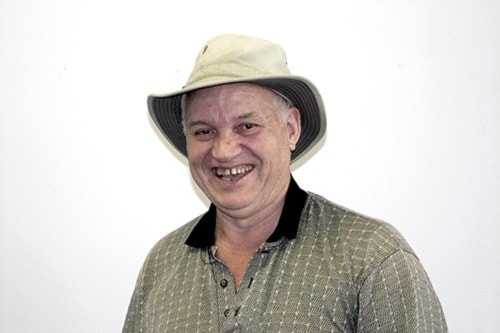At the end of the curling season I visited the rink to watch a final club championship game. Two of my sons were playing, and my wife and I wanted to support them in their last game of the season.
In the past, even when you sat upstairs and looked down upon the ice, you really only had a complete view at the home end (nearest the glass you were watching from). In the past, when you looked down the ice to the away end, you often couldn’t tell who had shot rock, or if three yellow rocks were closer than one red.
Now, however, that has all changed. The Castlegar Curling Club has installed video monitors upstairs above all four sheets of ice. While the game is going on, a camera pinpointed exactly above the rings at the far end is giving a picture of what happens upon every shot. So what was once a guessing game as the spectators looked the long way down the sheet of ice is now clearly available on a TV monitoring screen above their heads.
That made the game far more interesting for me. Several club members weren’t so sure the monitors would be a good idea, but the additions have been received well. People like being able to watch both ends of the ice as the game progresses.
I’ve noticed the addition of monitors or large screens to other types of events we’ve attended. In all cases, the video display of the experience happening directly in front of us was an enhancement worth having. If you’re a long way from the featured entertainer or the guest speaker, a screen about 40 metres to your right showing you a close-up is a good thing.
For example, when we were in Las Vegas a year ago, we managed to get tickets to Elton John’s performance at Caesar’s Palace. If you’ve ever been in the theatre at Caesar’s, you know it’s almost like a stadium setting. Thousands upon thousands can watch the performer, but often from where you’re sitting the main attraction is a miniature way down there. That was the case with Elton, but because Caesar’s provided huge screens in the corners on both sides of the huge stage, we could watch his finger work on his million-dollar piano. Usually, you can hear the performer; often, though, you can’t see, so the video of the performance as it happens enables good viewing. In the past, when you attended large conferences, you often had to sit in what was called the “nosebleed” sections, hoping to get a glimpse of the great Gwyn Dyer or the remarkable David Suzuki. Often, you could hear their voices, but you could barely pick them out on stage way, way up front.
Now, most conference organizers arrange for simultaneous videotaping of the speakers and have installed huge screens around the hall. So your experience in row 193 can be almost as good as that of delegate North Bay in row 12.
I’ve also noticed that most professional sports arenas have installed video screens for their sporting events. These are used for advertising, announcements, and replays. It’s interesting to watch a player like Sidney Crosby skating back to the bench and watching what happened on the play before the whistle. Why didn’t the puck go in the net? Now he knows immediately—and we get a second chance too, just as if we were at home watching on television.
I believe this videotaping and enhancement of both cultural and sporting events is a good thing. The screen or monitor keeps us more closely involved with the event we’re watching.
